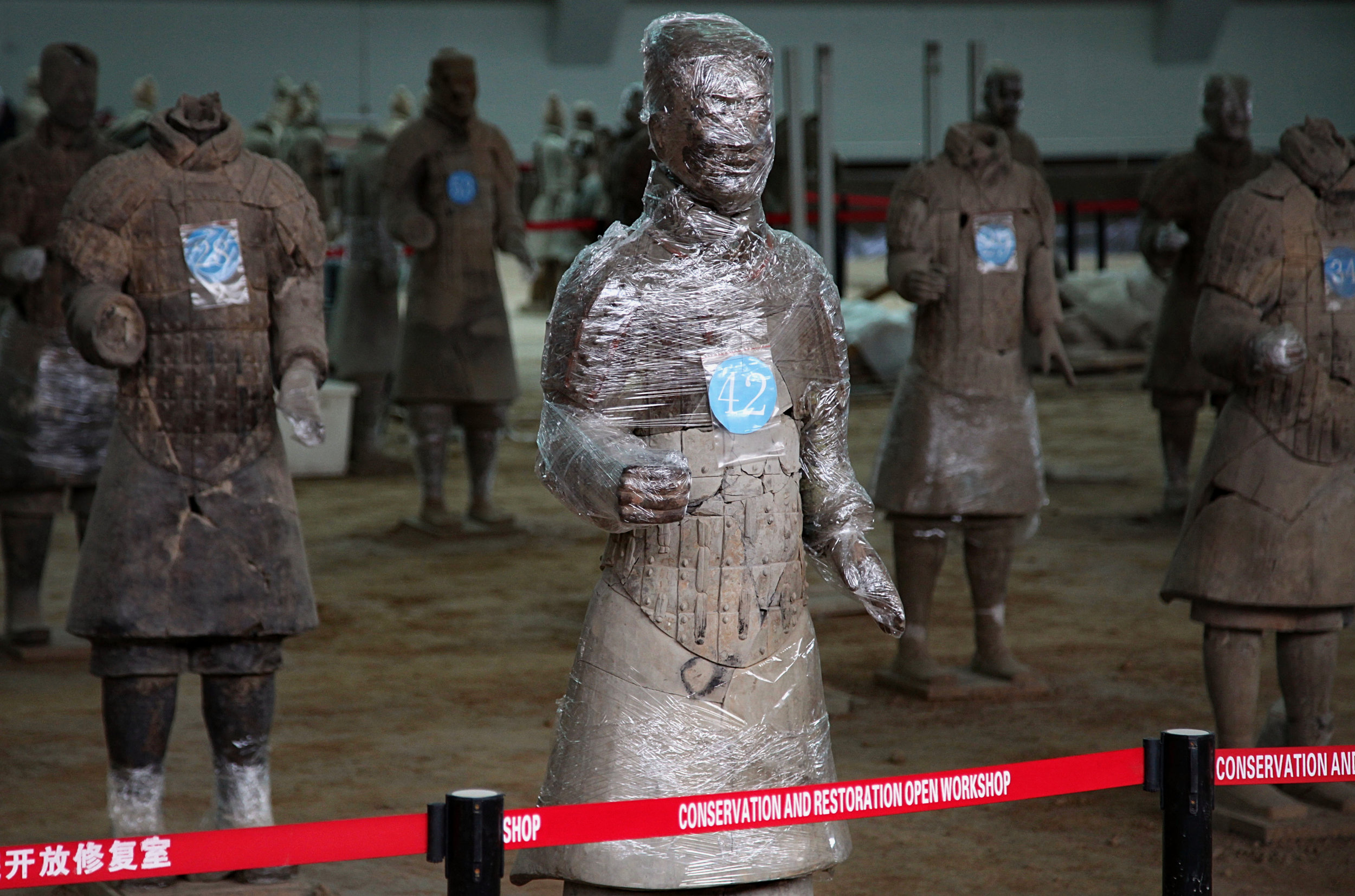One of the main problems in preserving colour in the Terracotta Warriors in Xi'an is that the lacquer and pigments which were used to colour them deteriorate rapidly - in just a few minutes - when removed from the safety of humid soil to the dry air outside.
Once pragmatic solution to maintain the humidity is to wrap them in the equivalent of cellophane used in the kitchen, as seen on the warrior in Pit 1 awaiting restoration.
























